Teaching with Timelines
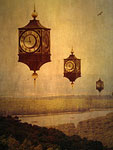
Throughout a school year or history course, students collectively construct an illustrated timeline of historic events and people they have studied.
Researchers have found that students too often encounter little bits and pieces of history out of context and unconnected to larger historic themes (1). Consequently, students don’t develop a sense of historic era and they don’t connect individual events to larger movements and themes (2). These limitations not only affect students’ grasp of history topics; they may also restrict students’ engagement in critical analysis. As a recent middle school study found, "Without proper background knowledge, students have difficulty developing the contexts for historical thinking" (3).
Timelines help students understand the chronology of historic events, and help students situate newly encountered events and figures in relation to those they’ve already studied (4). They provide a visual aid for identifying cause and effect relationships between events, and a visual prompt to activate student prior knowledge. They allow students to recognize how historic events, eras and topics overlap in time. Use them to categorize similar or related events into themes, eras, and topics, and to help students compare elements in different time periods.
All of these purposes are important singly, and collectively they help students develop a long-range understanding of historic chronology.
In this ongoing activity, a timeline is collectively constructed by students. It may be made of butcher paper and covered in student drawings, primary sources, and recipe-sized cards noting laws and events. Or, if fire codes allow, it may be made of rope, with images, dates, and documents hung from paper clips and clothespins. The main classroom timeline may be supplemented by smaller posterboard-sized lines that include only a few elements, such as changes in farming or in environmental regulation over time, or a chronology of legislation related to voting rights and disenfranchisement. But timelines should always be constructed by students so they reflect the students’ own learning.
- Cut a long strip of butcher paper. Your class timeline should be displayed as prominently as possible in your room, and should be easily reached for adding new elements. If it’s hard to reach, you’ll be less likely to add elements daily. But if you don’t have space in your classroom for your timeline, try hanging it in the hallway near your class.
- In bold colored marker, place marker dates on the paper. These will be determined by the course content. If you are teaching 19th- and 20th- century U.S. history, you may wish to label the timelines with 10 or 20 year increments, or you may wish to only list century markers. Be sure to leave space for dates before and after the time period your class will explore, however, as your class will almost certainly encounter events that precede and follow the designated beginning and conclusion of your unit explorations.
- Decide how the class will display elements on the timeline. Will you ask for volunteers to illustrate events that go on the line? Will you ask the class to vote on how they wish to illustrate various elements—with a student illustration, a copy of a primary source, a historic image or...? Will you decide each time how an element that goes on the line will be represented?
- Start your classroom timeline at the beginning of the school year. Add to it throughout the year.
- At the conclusion of an exploration of a significant event or person, ask the class if they would like to include that person or event on the class timeline. Tape the representation of the new element to the timeline, with a date and title prominently visible. When posting a person’s life rather than a single action by a person, you may wish to list dates of birth and death.
- Every day or two, begin your history study with a review of the timeline. Settle your students on the floor in front of the line and invite them to do a silent “walk and talk” of the events on the line. Allow a minute or two for this activity, and then invite a student to stand and do a walk-and- talk aloud (see video). The students don’t need to account for every element on the line; they should just use the elements as prompts to tell a story about a particular era or theme, or inventory various things that were happening during the same time period. Let students finish before correcting any mistakes they may make in their storytelling.
- When deciding which elements to put on your timeline, it’s better to err on the side of generosity than stinginess. The more elements on your line, the better it reflects your class's learning, at least if you are engaged in rich history explorations. But don't limit your dates to events you explore in formal history lessons; include elements from other disciplines as well. Language arts, science, music, math; if you encounter a historic topic in one of those areas, add it to the class line. If a student finds something at home that relates to history, invite them to add it to the line. A dynamic, full-to-the-brim timeline is a sign of a class that’s engaged in history full- tilt.
- As your class explores history, allow and encourage your students to view and reference the timeline spontaneously to situate new evidence in relation to what they’ve already studied, or to infer the timing of a new historic element for which they have no date.
Watch this video and listen to a student walk and talk her way through her class timeline.
Lesson plans and units that incorporate timeline activities are available on the Bringing History Home project website. Additional information about using timelines in elementary and college history classrooms is also available on the site.
See this entry about Docs Teach from the National Archives to explore their “Finding a Sequence” timeline tool that allows teachers to create their own document-based timeline activities.
EdTechTeacher overviews online timeline creation tools and techniques.
1 Barton, K. (2002) “Oh, that’s a tricky piece!”: Children, mediated action, and the tools of historical time. The Elementary School Journal, v.103, n.2.
2 Shemilt, D. (2000) The Caliph’s Coin: The currency of narrative frameworks in history teaching. Knowing, Teaching & Learning History, eds. Stearns, P. et. al., New York: New York University Press.
3 Twyman, T., et.al. (2006) Using concepts to frame history content. The Journal of Experimental Education, 74 (4), 331-349.
4 Fillpot, E. (2007, 2008) These findings are from unpublished studies conducted with children in the Bringing History Home K-5 curriculum and professional development project.
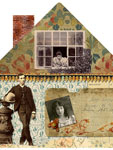
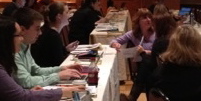
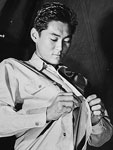
 The lives and experiences of all groups in the U.S. overlap and intertwine with each other, and no group's history exists in isolation. Japanese American history didn't begin and end with World War II, nor did it exist in a vacuum. Enter the keywords "registration certificate 1942" into the search box at the
The lives and experiences of all groups in the U.S. overlap and intertwine with each other, and no group's history exists in isolation. Japanese American history didn't begin and end with World War II, nor did it exist in a vacuum. Enter the keywords "registration certificate 1942" into the search box at the  Both a Pacific Island and a U.S. state, Hawaii has a unique position for Asian Pacific American Month. Many different cultures come together here, including Native Hawaiian, Filipino, Japanese, Korean, and Chinese, among others, and it is one of only four states where non-Hispanic whites do not form the majority. Sources on the history of many of these groups can be found in the
Both a Pacific Island and a U.S. state, Hawaii has a unique position for Asian Pacific American Month. Many different cultures come together here, including Native Hawaiian, Filipino, Japanese, Korean, and Chinese, among others, and it is one of only four states where non-Hispanic whites do not form the majority. Sources on the history of many of these groups can be found in the 
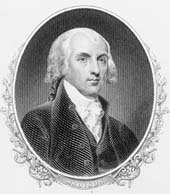
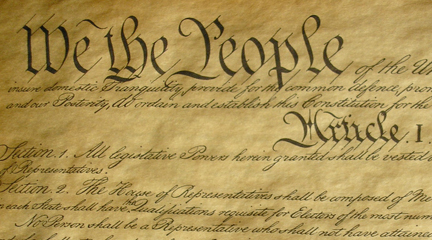
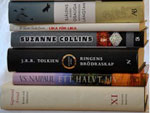
 This map depicts the “New World” and was created by Spanish cartographers. It shows North and South America. Mostly accurate, this map also has some wonderfully fanciful ideas of the New World. Find a copy of
This map depicts the “New World” and was created by Spanish cartographers. It shows North and South America. Mostly accurate, this map also has some wonderfully fanciful ideas of the New World. Find a copy of  John White has a very interesting history. He worked for Sir Walter Raleigh and traveled to Virginia to establish the colony of Roanoke. During the second, and final, attempt to make Roanoke a success, John left his daughter and granddaughter in the colony when he traveled to England for supplies. Upon his return he found the colony destroyed and all the colonists missing—including his daughter and granddaughter. White’s
John White has a very interesting history. He worked for Sir Walter Raleigh and traveled to Virginia to establish the colony of Roanoke. During the second, and final, attempt to make Roanoke a success, John left his daughter and granddaughter in the colony when he traveled to England for supplies. Upon his return he found the colony destroyed and all the colonists missing—including his daughter and granddaughter. White’s  John White's map and artwork, along with the work of other artists, illustrated a published
John White's map and artwork, along with the work of other artists, illustrated a published  Encounter is a fictional story of Columbus's arrival to the New World from the Native American perspective. Visually stunning, this story can be used to build background while allowing students to practice several ELA reading comprehension skills.
Encounter is a fictional story of Columbus's arrival to the New World from the Native American perspective. Visually stunning, this story can be used to build background while allowing students to practice several ELA reading comprehension skills. The title says it all. There is also Black Heroes of the American Revolution by Burke Davis.
The title says it all. There is also Black Heroes of the American Revolution by Burke Davis. A book about the stories behind some of America's patriotic symbols. This is a fun book with interesting and often amusing anecdotes about all things patriotic.
A book about the stories behind some of America's patriotic symbols. This is a fun book with interesting and often amusing anecdotes about all things patriotic. LOVE this book. It tells the story of how Thanksgiving, as an American holiday, was almost lost. The story is told with charming illustrations (and text) and Sarah's character is a great model for perseverance.
LOVE this book. It tells the story of how Thanksgiving, as an American holiday, was almost lost. The story is told with charming illustrations (and text) and Sarah's character is a great model for perseverance.